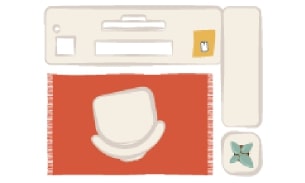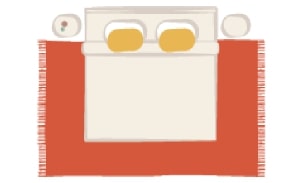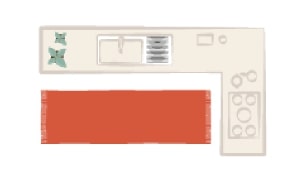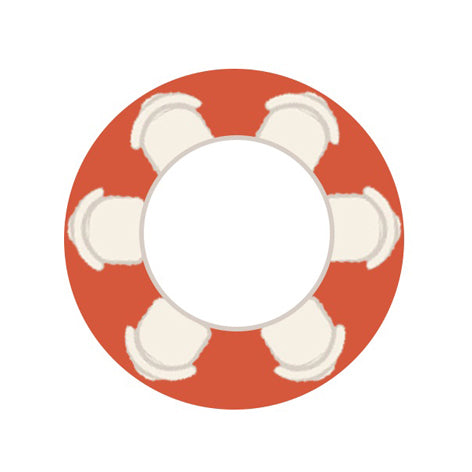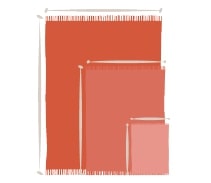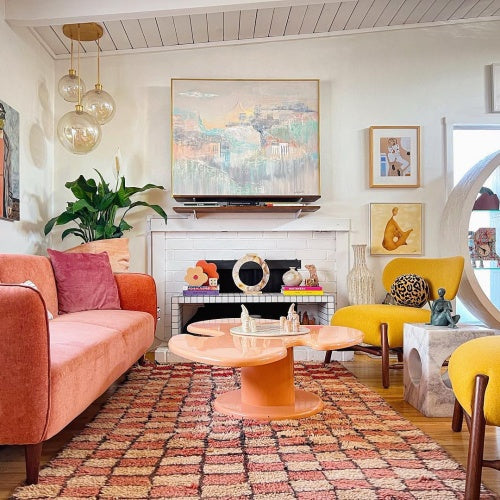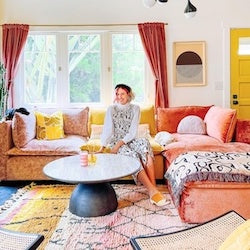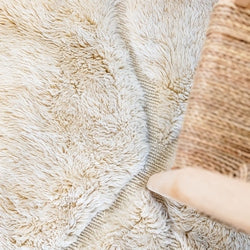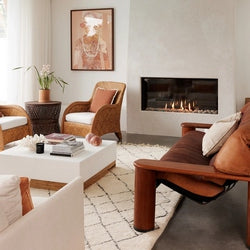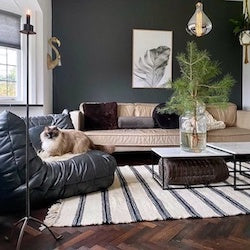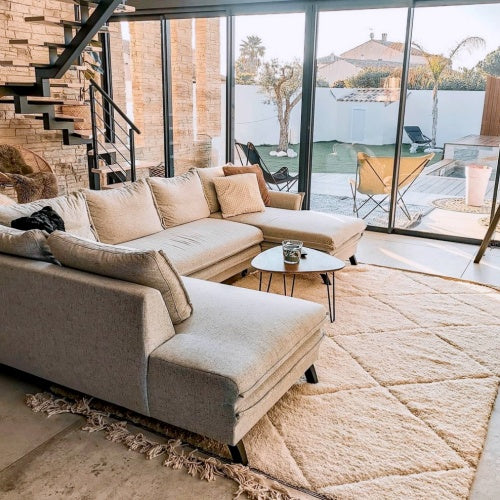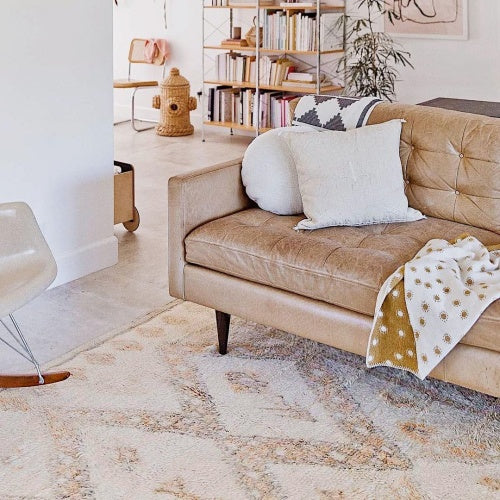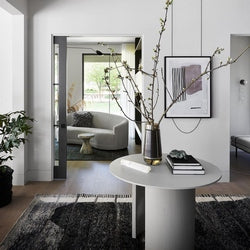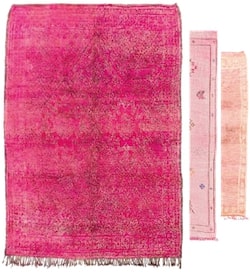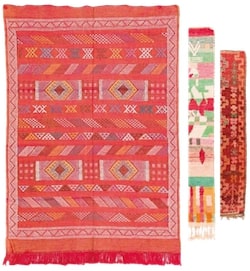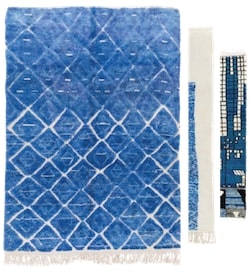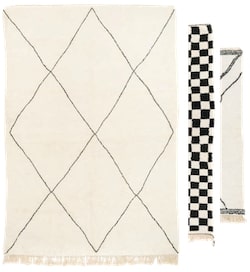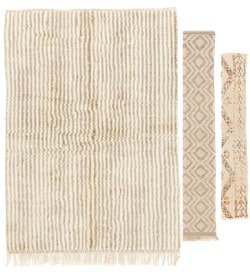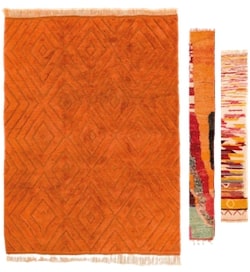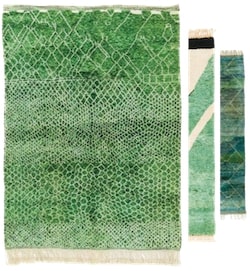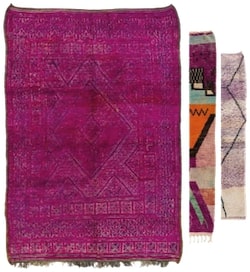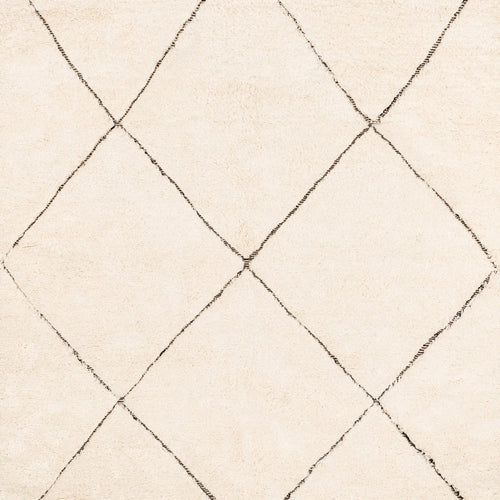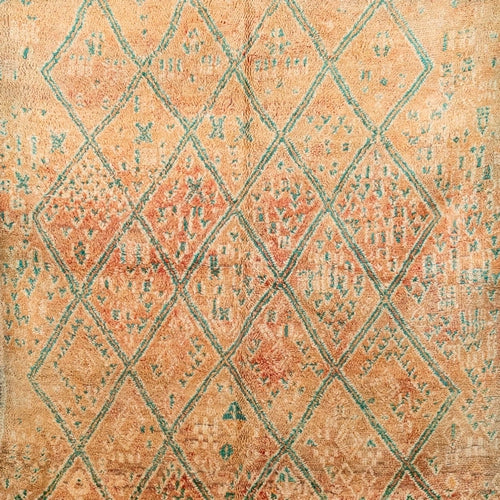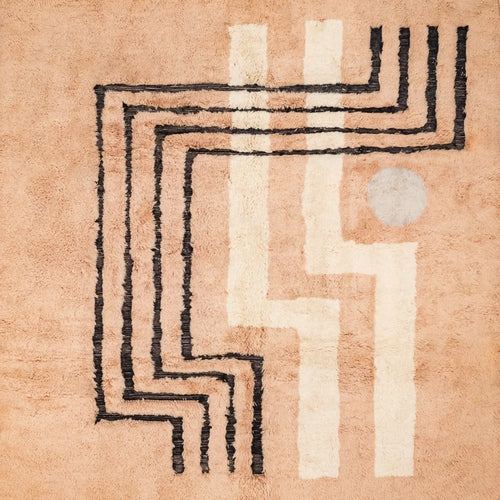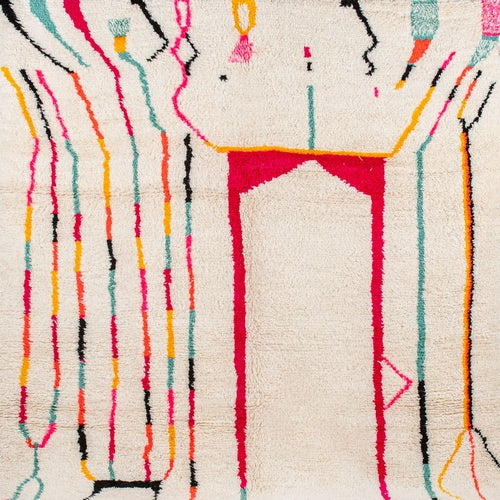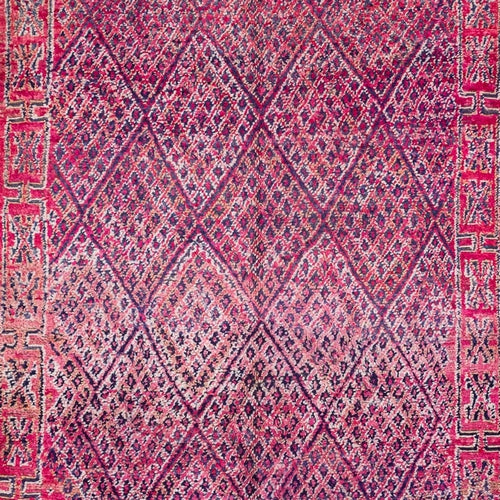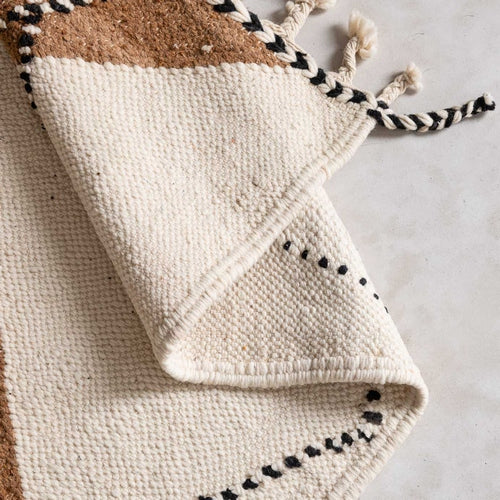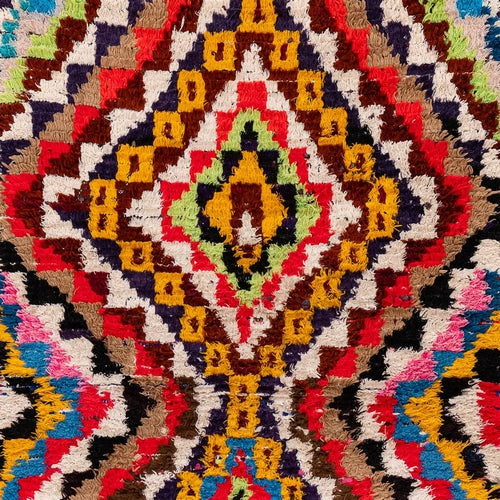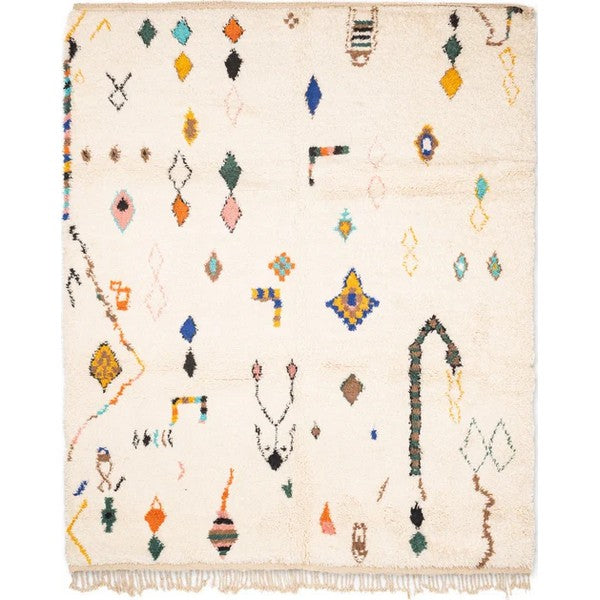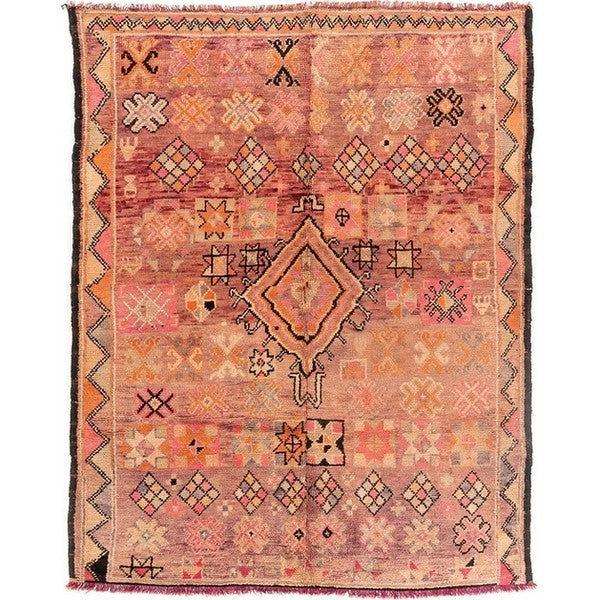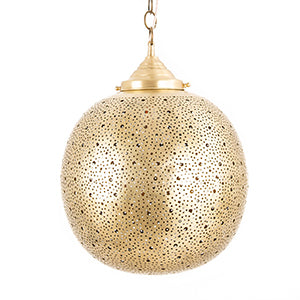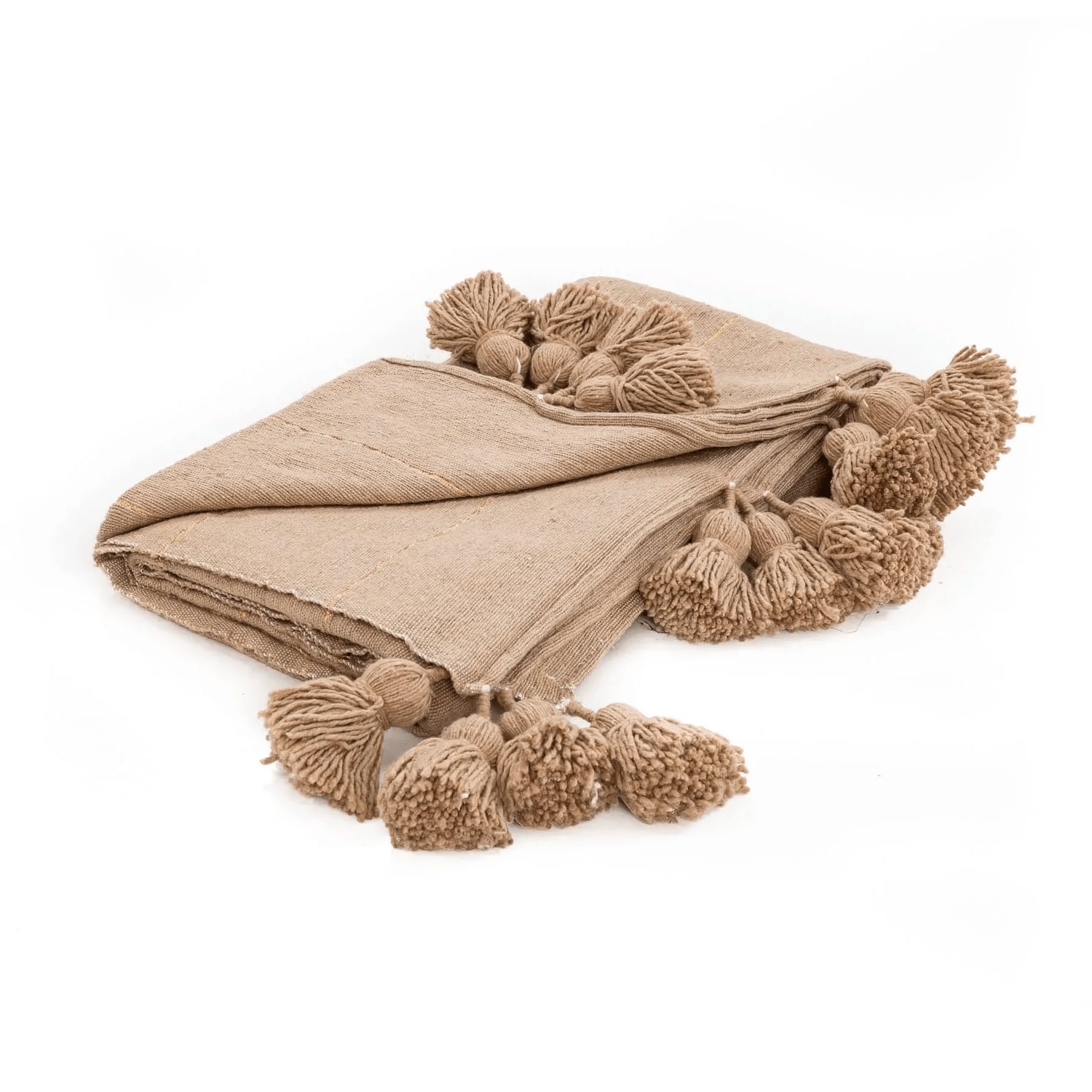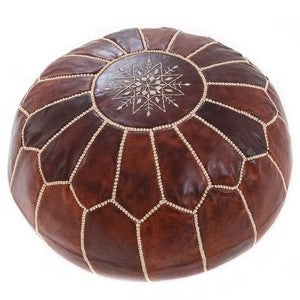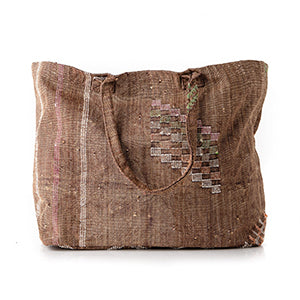Popular Products
- AU$19.99
- Unit price
- / per
- AU$19.99
- Unit price
- / per
- AU$19.99
- Unit price
- / per
Search for rugs, style, colors...
Moroccan Runner rug – Handwoven Elegance for Every Step.
Shop Handwoven Runners That Combine Moroccan Tradition with Modern Style.
Moroccan Runner rug
Step into the vibrant world of Moroccan Runner Rugs. An intricate mosaic of tradition, each rug tells a story, weaving the rich tapestry of Morocco’s diverse tribes, their ancient artistry, and deep-rooted culture.
The Moroccan Mosaic: Tribes and their Trademark Rugs
Beni Ourain: The Harmony of Simplicity and Elegance
Residing in the Middle Atlas Mountains, the Beni Ourain tribe is renowned for creating rugs featuring natural, undyed wool. Their creations express a beautiful blend of simplicity and elegance, predominantly employing a monochrome palette of black and white. The Beni Ourain rugs, with their characteristic geometric patterns, silently narrate tales of the tribe's pastoral life and cosmic beliefs.
Boujad: The Symphony of Colors and Expressions
Situated in Morocco's Haouz region, the Boujad tribe is famous for their vibrant rugs. Dyed in fiery reds, deep oranges, and passionate pinks, each rug is a unique reflection of the craftswoman, symbolizing her personal expressions of femininity, rural life, birth, and spirituality.
Beni Mguild: The Depth of Jewel Tones
In the western Middle Atlas region, the Beni Mguild tribe weaves dense rugs, recognized for their rich, jewel-toned color palette. Their rugs, often in shades of deep indigo, lush green, and regal purple, feature traditional Berber motifs and are a testament to the tribe's resilience against the region's cold climates.
Azilal: The Art of Abstraction
Hailing from the central High Atlas, the Azilal tribe creates rugs that are a delightful dance of abstract designs. Combining raw, natural wool with dyed threads, they create vibrant, one-of-a-kind pieces that speak of individual stories and tribal folklore.
Boucherouite: The Magic of Material Mix
The Boucherouite rugs are not tied to a specific tribe but are rather a testament to Moroccan resourcefulness. Crafted from recycled fabric scraps, these rugs are a riot of colors and textures, symbolizing the artistic spontaneity of the weavers.
Taznakht: The Brilliance of Berber Knots
The Taznakht tribe, from the Souss-Massa region, is known for their exquisite rugs featuring intricate Berber knots. These rugs often depict tribal symbols and stories, woven in an exciting array of colors and patterns.
Mrirt: The Refinement of Rich Pile
From the Khenifra region, the Mrirt tribe's rugs are admired for their high-quality wool and plush pile, providing comfort and warmth. Often rendered in shades of brown, beige, and ivory, they exhibit simple geometric designs and are a symbol of the tribe's expert craftsmanship.
Tuareg: The Nomads' Narrative
Originally nomads of the Sahara, the Tuareg tribe's mats incorporate leather or reed, telling tales of their desert life. Featuring complex geometric patterns, these mats are a reflection of the tribe's rich history and endurance.
Harmonizing Interiors: Moroccan Rugs Meet Global Styles
Effortlessly elegant, Moroccan rugs bring their own unique charm to every interior style, leaving an indelible impression with their intricate craftsmanship and rich heritage.
Bohemian Splendor Meets Moroccan Craft
For those who adore the eclectic and artful vibe of Bohemian interiors, a Moroccan runner rug fits like a glove. The stunning visual symphony of warm, vibrant colors and bold, ethnic patterns complements the Boho style's spirit, creating a space that exudes comfort, creativity, and an inviting warmth.
Timeless Elegance: Moroccan Rugs in Contemporary Settings
For contemporary spaces known for their chic minimalism and subtle elegance, Moroccan rugs introduce a tasteful hint of texture and organic charm. A Beni Ourain rug, with its simple monochromatic palette and understated geometry, enhances the contemporary ambiance while offering a touch of cultural depth and warmth.
Modern Marvel: The Moroccan Influence
In a modern decor setting, Moroccan rugs provide a perfect balance between the clean, streamlined aesthetics of modernism and their own organic warmth and ethnic flair. A vibrant Boujad rug, for instance, can serve as an enchanting centerpiece, introducing a pop of color and artistic narrative to a modern space.
An Eclectic Fusion: Moroccan Rugs and Maximalism
For those who believe more is more, the eclectic maximalist style paired with a vibrant Moroccan runner rug creates a bold and beautiful harmony. The rugs' lush designs and rich color palette amplify the maximalist love for variety, creating a visually stimulating space that's filled with personality and cultural richness.
Scandinavian Serenity: The Warm Touch of Moroccan Rugs
Scandinavian style, with its emphasis on simplicity, functionality, and minimalism, finds a perfect partner in the natural elegance of Moroccan rugs. A plush, high-pile Moroccan runner rug adds a touch of warmth and texture to the cool, neutral Scandinavian palette, contributing to the creation of a cozy, hygge-friendly space.
The Perfect Match: Pairing Moroccan Rugs with Your Space
Moroccan rugs, with their variety of styles and designs, can beautifully accentuate different rooms in your home, providing not only aesthetic appeal but also functionality.
Invigorating the Living Room with Moroccan Warmth
The living room is the heart of the home, and a Moroccan rug can make it pulsate with vibrancy and warmth. Whether it's a rich, jewel-toned Beni Mguild rug acting as a focal point in a modern setting or a plush, neutral-toned Beni Ourain rug adding texture to a minimalist decor, a Moroccan rug can dramatically transform your living space, making it inviting and visually interesting.
A Sanctuary of Comfort: Moroccan Rugs in the Bedroom
The bedroom is a personal retreat, a sanctuary of comfort, and a Moroccan rug can enhance this space with its soft, comforting presence. A thick, high-pile Mrirt rug beside your bed will make your mornings cozy, while the soothing colors and symbolic patterns can lend a sense of tranquility and charm to your personal space.
Welcoming Halls: The Moroccan Runner Magic
The hallway might seem like a transitional space, but with a Moroccan runner rug, it can make a stylish statement. A vintage Moroccan runner, with its long, narrow design and captivating patterns, is perfect for your hallways, adding an inviting warmth and dynamic visual interest.
Cooking with Culture: Moroccan Rugs in the Kitchen
While it might seem unconventional, a Moroccan kitchen runner can add a dash of color and fun to your cooking space. A hardwearing, low-pile Boucherouite runner, known for its playful color mix, can stand up to kitchen foot traffic while keeping the space lively and cozy.
An Unlikely Pair: Moroccan Rugs and Bathrooms
An unlikely yet enchanting pair is a Moroccan rug in the bathroom. The rich, vibrant colors and patterns can transform a plain bathroom into a personal spa retreat. Opt for a smaller, tightly woven Moroccan rug for an instant touch of luxury and comfort. However, do ensure proper ventilation and regular cleaning to maintain the rug's freshness.
Timeless Craftsmanship: Materials and Quality of Moroccan Rugs
The charm and endurance of Moroccan rugs come from the time-tested quality of their materials and the craftsmanship that turns these materials into cultural masterpieces.
Wool: The Warmth of Nature
The most common material used in Moroccan rugs is wool. Sourced from local sheep reared in high-altitude regions, Moroccan wool is highly prized for its superior quality and durability. The wool provides the rugs with their characteristic plushness, warmth, and longevity. Its natural hypoallergenic properties add to its appeal.
Cotton: The Touch of Softness
Sometimes, Moroccan weavers incorporate cotton into their rugs. Cotton, being less elastic than wool, provides structure to the rugs, especially to those featuring intricate patterns. Its smooth and soft texture, combined with its durability, makes it a popular choice for summer rugs or rugs intended for high-traffic areas.
Natural Dyes: The Palette of Mother Earth
Traditional Moroccan rugs boast of colors derived from natural dyes. Roots, leaves, berries, bark - nature's palette is extensive and astonishing. The result is a color scheme that beautifully ages with time, rather than fading away. The use of natural dyes also reaffirms the Moroccan artisans' deep respect and connection with the environment.
Reed and Leather: The Desert’s Gift
Notably used by the Tuareg tribe, reeds and leather are materials adapted for the harsh, dry conditions of the desert. The resulting mats, known for their durability and resilience, tell a tale of life in some of the harshest climates on earth.
These diverse, high-quality materials, chosen thoughtfully by Moroccan artisans, ensure that your Moroccan runner rug is not just an aesthetic masterpiece but also a long-lasting one. Whether it's a Moroccan table runner gracing your dining area or a Moroccan floor runner adding charm to your hallway, you're investing in an enduring piece of art that marries functionality with beauty.
Artisans: Guardians of Ancient Craftsmanship and Berber Heritage
Moroccan rugs are not just products; they're a labor of love, woven by skilled artisans who have inherited their craft through generations. These artisans, mostly women, are the lifelines of their tribes and the guardians of the Berber heritage.
Life in the remote regions of Morocco, closer to nature, impacts the artisans' creativity and their work profoundly. Each rug they craft is a reflection of their interaction with the surroundings, their daily experiences, their dreams, and their rich cultural history.
The family values held dear by the Berber tribes play an essential role in preserving this traditional craft. Rug weaving techniques and motifs are often family-specific and are passed down from mother to daughter, carrying forward stories and skills that have shaped the Berber identity over centuries.
The craftsmanship of the Moroccan rugs encapsulates the values, lifestyle, and artistic perspective of the Berber tribes. When you purchase a Moroccan runner, you're not just buying a rug, but you're also supporting these artisans, their families, and a cherished tradition that spans centuries. You're also inviting a piece of Moroccan lifestyle into your own home, allowing it to merge seamlessly with your decor and infuse it with a unique, authentic charm.
A Tapestry of Tradition: The Berber Carpet Weaving
Moroccan rug making, a craft passed down through generations, is an embodiment of the wisdom, history, and lifestyle of the Berber tribes. This section highlights the intricate know-how of Berber carpet weaving, which has evolved yet remained true to its roots over centuries.
The genesis of rug weaving, it is believed, began as a practical necessity to cope with Morocco's extreme climatic conditions, varying from the snowy Atlas Mountains to the harsh Sahara desert. The Berbers crafted rugs with a tight weave and high pile for colder regions, while flat-woven kilims were preferred in warmer areas.
As time went on, these utilitarian items took on a more symbolic significance, becoming a medium of personal expression and storytelling for the weavers. The women started to imbue their work with their experiences, dreams, and emotions, turning each rug into a unique, creative narrative.
The weaving process itself, though it appears simple, requires an impressive degree of skill, patience, and artistic vision. The weaver has to master the loom, understand the interplay of warp and weft, and decode the language of colors and symbols. This complex process is a testament to the Berber weavers' craftsmanship and their commitment to preserving their cultural heritage.
The Berber rug weaving tradition stands as a living testament to a culture that has managed to retain its identity and artistry amidst the sweeping tides of time and change. When you choose a Moroccan rug, you are celebrating this rich history and time-honored craftsmanship that goes into the creation of every single knot and weave. Each Moroccan runner, each Moroccan kitchen runner, is an extension of this rich cultural heritage, bringing an essence of it right into your home.
Colors of Morocco: The Vibrant Palette of Moroccan Rugs
The colors used in Moroccan rugs aren't just about aesthetics. They're rich with symbolism and carry tales from the tribes that create them. Here, we decode the color palette that gives life to these woven wonders.
White: The Blank Canvas
White, often seen in Beni Ourain rugs, is a symbol of purity, peace, and simplicity. It also reflects the snow-covered peaks of the Atlas Mountains where the tribe resides. A white Moroccan runner rug can bring a serene, calming effect to your space.
Black and White: Harmony in Contrast
The combination of black and white is a popular choice in Moroccan rugs. Symbolizing the harmony of opposites, these rugs bring together the yin and yang, creating a beautiful balance in your decor.
Pink and Red: Celebrating Life
Colors like pink, red, and orange, common in Boujad rugs, are celebratory colors. They symbolize joy, life, and femininity. A vibrant pink or red Moroccan rug runner can infuse a room with warmth and joyful energy.
Blue: Echoes of the Sky and Sea
Blue, seen in rugs from the coastal tribes, symbolizes the sky and sea, embodying spirituality, wisdom, and calmness. A blue Moroccan runner can evoke a sense of tranquility and depth in your space.
Green: Nature's Embrace
Green, though less commonly used, symbolizes nature, life, and prosperity. A green Moroccan carpet runner in a room can create a refreshing and serene ambiance.
Beige, Ivory, and Brown: Earthly Connection
Natural hues of beige, ivory, and brown reflect the connection with the earth, symbolizing stability, reliability, and resilience. A Moroccan rug in these colors can bring a grounded, warm feel to your interiors.
The colorful palette of Moroccan rugs offers a range of options to suit your tastes and preferences. Whether you opt for a vintage Moroccan runner that boasts rich, faded hues, or a contemporary Moroccan runner with crisp, clear colors, the choice is a reflection of your personality and style.
Symbols and Stories: Understanding Patterns in Moroccan Rugs
Moroccan rugs are a visual language, where every pattern narrates a story, expresses an emotion, or represents a natural element. Let's explore the symbolic universe of these patterns.
Diamonds: Protection and Positivity
The diamond shape is one of the most common motifs in Moroccan rugs. This pattern symbolizes protection against evil eyes and brings positive energy. A Moroccan runner rug embellished with diamond motifs is not only a decorative piece but also a spiritual guardian for your home.
Zigzags: Depicting Nature's Course
The zigzag pattern, seen often in rugs from the Azilal tribe, represents flowing water, symbolizing life and continuity. This dynamic pattern can add a lively, rhythmic energy to your space.
Lozenges: Feminine Symbolism
Lozenges, similar to diamonds but with a slightly longer form, are symbolic of womanhood and fertility. A Moroccan runner with lozenges is a celebration of feminine strength and creation.
Crosses: Intersection of Life Paths
Crosses represent the intersection of two paths or lives, symbolizing the unity of beings. A Moroccan rug with cross motifs can evoke a sense of harmony and interconnectedness in your home.
Chessboard: The Journey of Life
The chessboard pattern symbolizes the journey of life, with its mix of good and bad experiences. The Moroccan rug runner bearing this motif can serve as a constant reminder of life’s unpredictable, yet beautiful journey.
Understanding these patterns in Moroccan rugs allows you to appreciate their depth beyond their decorative value. Each pattern in your chosen Moroccan runner or Moroccan carpet runner not only adds an aesthetic element to your space but also brings a deeper cultural significance, enhancing your connection with the rug.
Benisouk: Your Trusted Gateway to Authentic Moroccan Runner Rugs
Your journey to find the perfect Moroccan rug ends at Benisouk. We offer a plethora of options, from the vintage Moroccan runner that carries stories of the past to the modern Moroccan runner rugs that blend tradition with contemporary designs.
Benisouk is not just a retailer but a bridge that connects you to the rich traditions of the Berber tribes. Our carefully curated collection is sourced directly from the artisans, ensuring you receive authentic, high-quality rugs. When you choose to buy from Benisouk, you're not just purchasing a rug; you're supporting a heritage, an artisan, and a way of life.
Every Moroccan runner rug in our collection is a testimony to the craftsmanship and creativity of the Moroccan artisans. Whether you're looking for a Moroccan table runner to add a touch of tradition to your meals or a Moroccan hallway runner that echoes with stories of a far-off land, Benisouk brings you the very best.
So, make room for a piece of Moroccan culture in your home, let a Moroccan rug from Benisouk create a unique, personal, and meaningful space. Immerse yourself in the riot of colors, the dance of patterns, and the stories each rug tells. With Benisouk, every rug you choose is not just a purchase; it’s a journey into the heart of Morocco.
- Choosing a selection results in a full page refresh.
